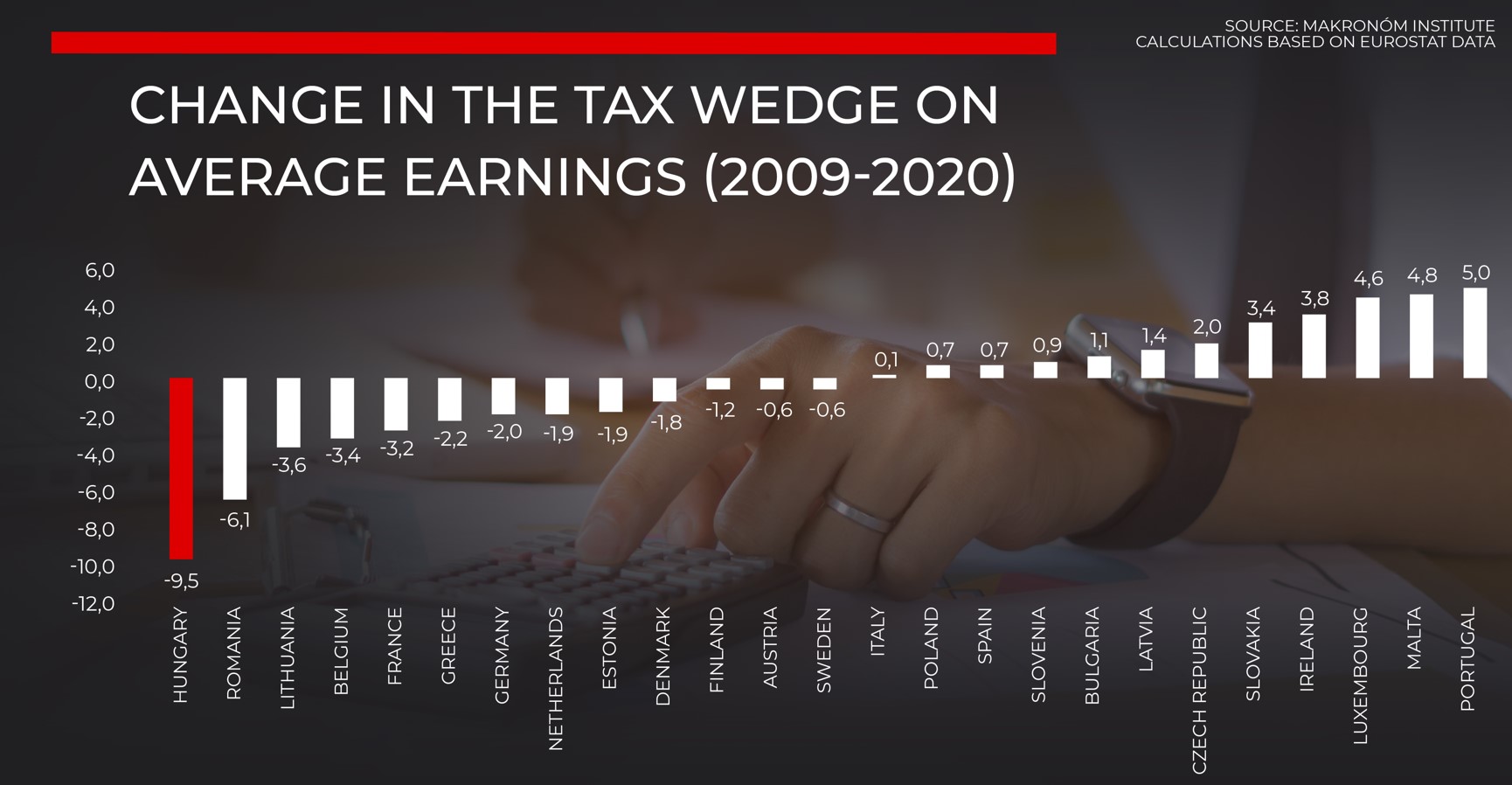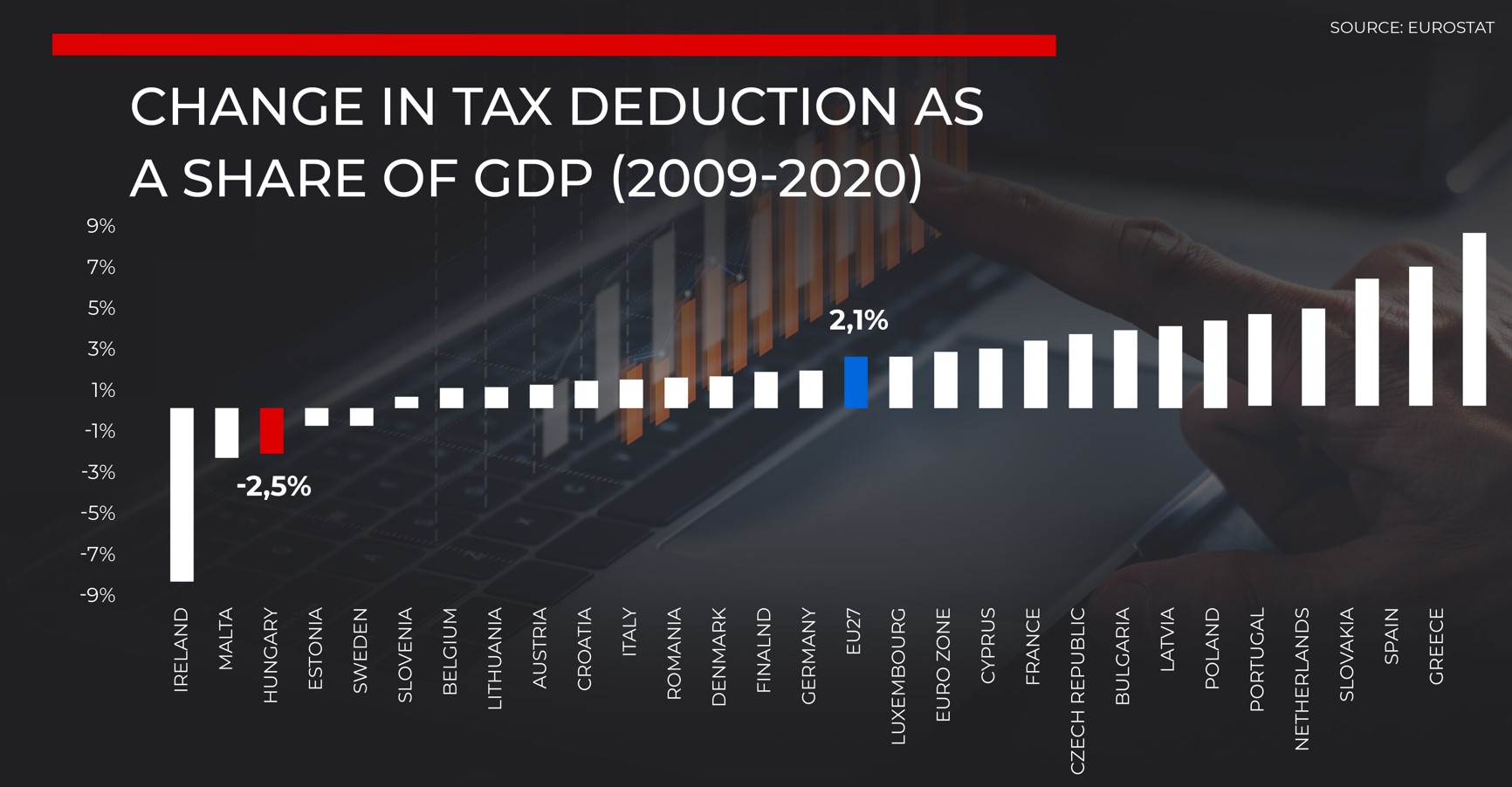According to Eurostat, Hungary has cut taxes on wages and salaries by the largest amount in the last decade.
This year's tax cuts also included a HUF 600 billion reduction in employer taxes, which will allow Hungary to maintain its top tax-cutting position among EU countries in 2022, Finance Minister Mihály Varga wrote in a Facebook post earlier today.
According to a chart attached to the post, Hungary's tax wedge on average wages fell by 9.5 percentage points between 2009 and 2020; meanwhile, Romania saw the next biggest decrease, at 6.1 percentage points, and Portugal saw the biggest increase, at 5.0 percentage points.


